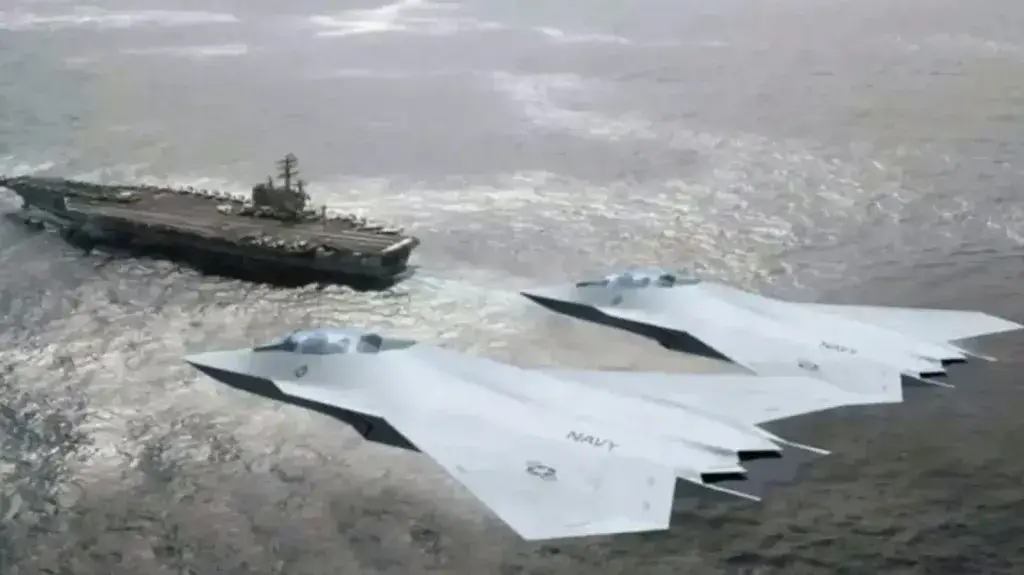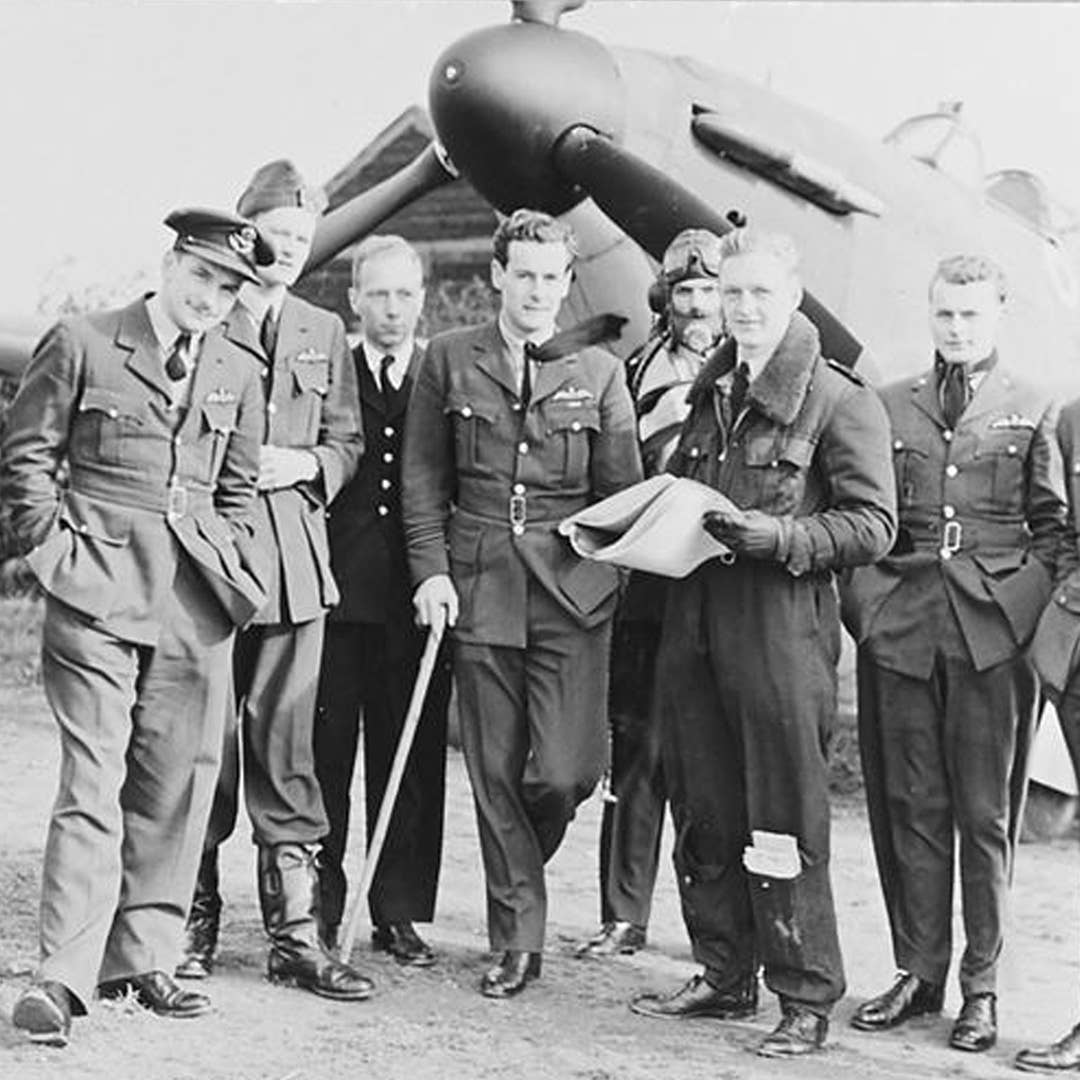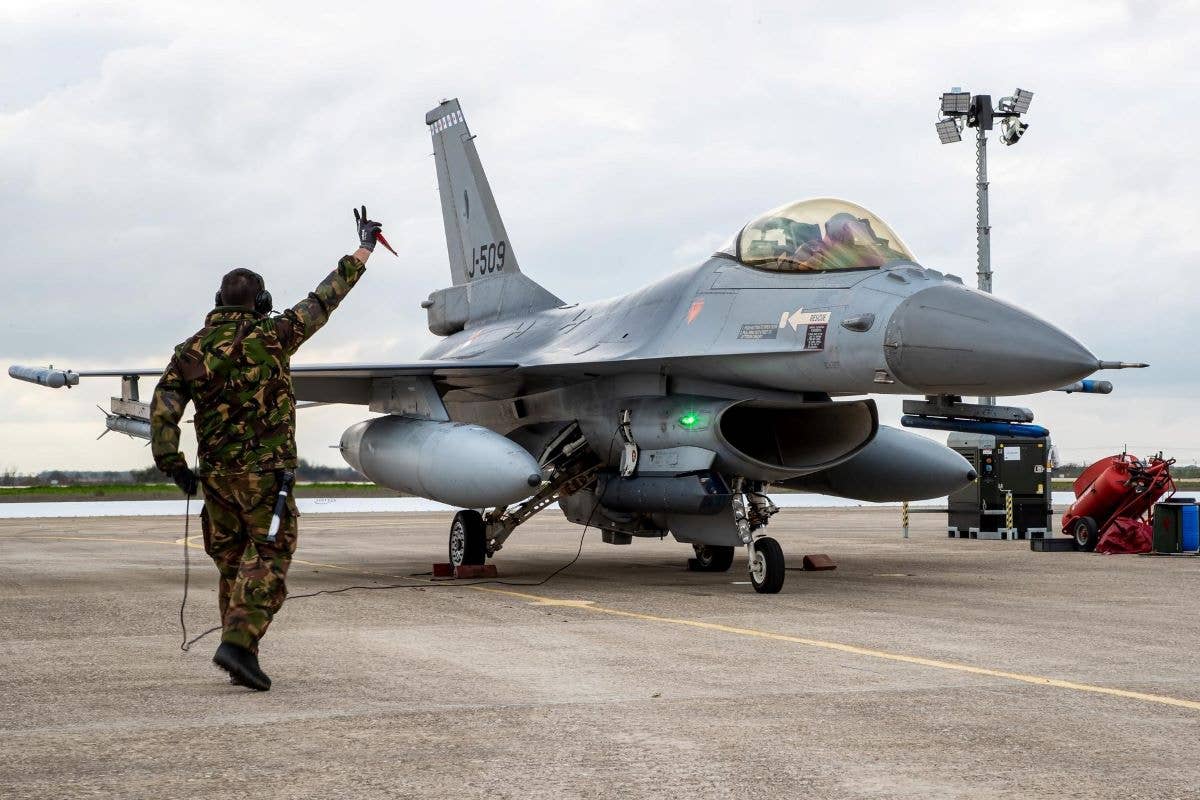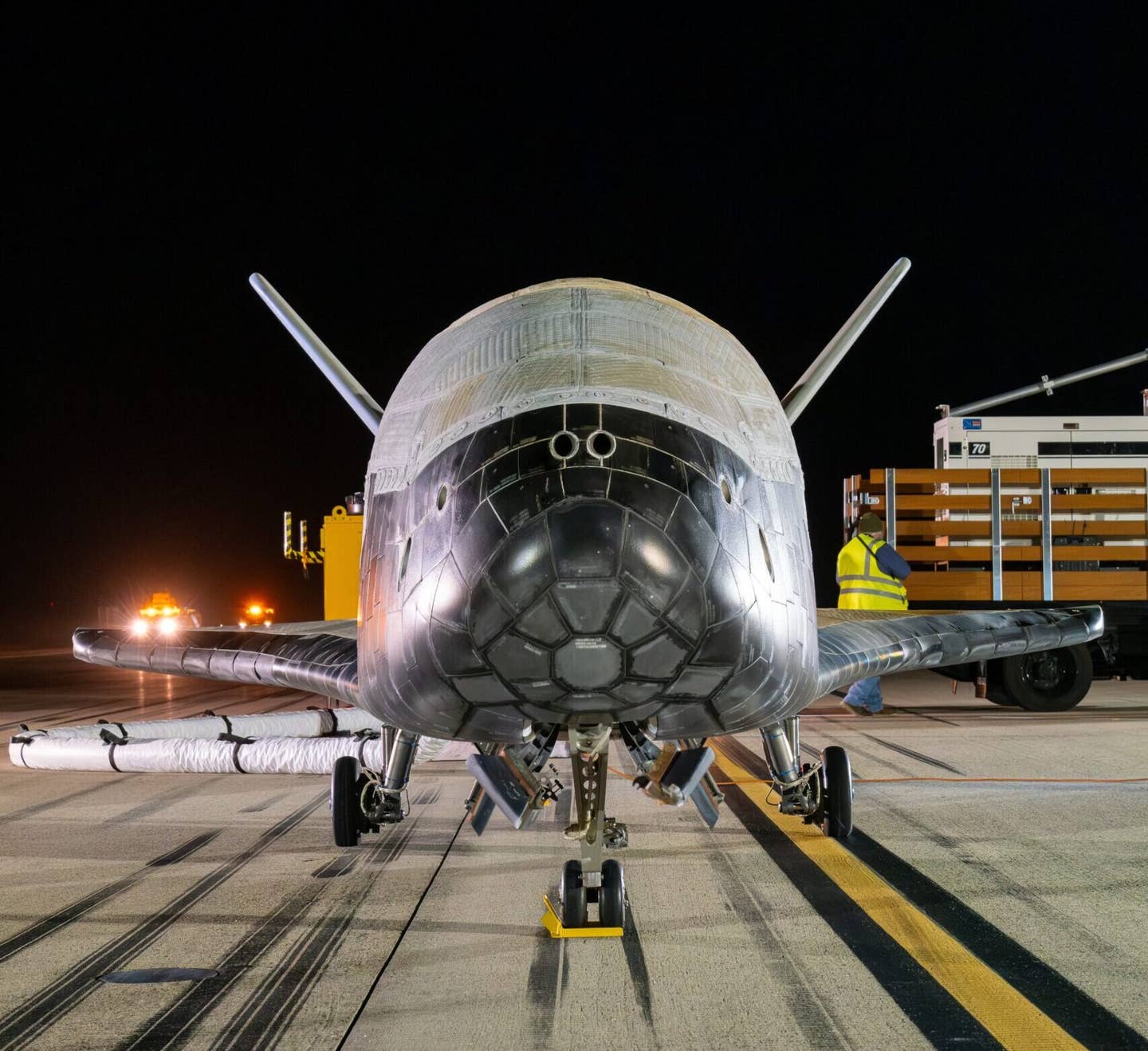More U.S. Fighters Deploy as Part of Carrier Battle Group Heading to Mediterranean
The USS Dwight D. Eisenhower Carrier Strike Group will offer options to help dissuade a second front opening, Defense Secretary Lloyd Austin said.
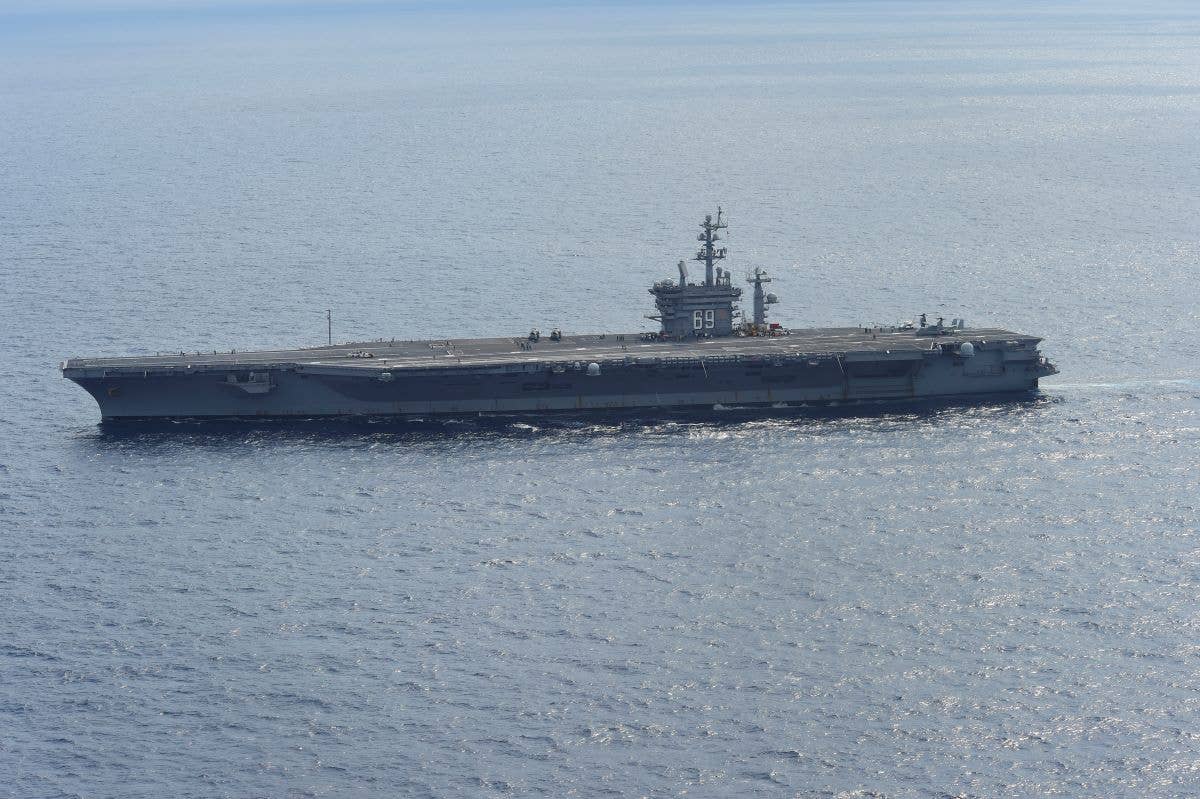
The aircraft carrier USS Dwight D. Eisenhower (CVN 69) transits the Atlantic Ocean in October 2015. [Credit: U.S. Navy]
Defense Secretary Lloyd Austin has ordered a second carrier strike group, including nine fighter squadrons, to deploy from Norfolk, Virginia, to the eastern Mediterranean.
"The increases to U.S. force posture signal the United States' ironclad commitment to Israel’s security and our resolve to deter any state or nonstate actor seeking to escalate this war," Austin said Saturday of the deployment.
The announcement comes as Israel continued its barrage of airstrikes on Hamas militant strongholds in the Gaza Strip. At least 2,778 have been killed and 9,700 wounded in Gaza, the health ministry said Monday, according to an Associated Press report.
- READ MORE: What the Israeli Air Force Has in the Sky
In the first five days following Islamic militant group Hamas' multifront surprise attack on Israel, the Israeli Air Force (IAF) dropped about 6,000 bombs on what it said were Hamas targets, the IAF Thursday.
That is almost more than during the 2014 war in Gaza that lasted 53 days, retired IAF brigadier general Zvi Kanor told FLYING.
"The bombing is extremely greater than it was ever," Kanor said. "We are using all of our fighters. We are using F-16s, F-15s, F-35s, and Apaches. We are using all of them and their capability is enormous."
Deploying to Deter Aggression
Israel's relationship with the U.S. is "one of its most important assets," said Kanor, who called the Carrier Strike Group deployment "a great move" in deterring Iran and Hezbollah.
The USS Dwight D. Eisenhower CSG includes the guided-missile cruiser USS Philippine Sea (CG 58), guided-missile destroyers USS Gravely (DDG 107) and USS Mason (DDG 87), as well as Carrier Air Wing 3, with nine aircraft squadrons, and embarked headquarters staffs, Austin said.
The CSG deployment had been scheduled for the U.S. European Command area of responsibility, according to the Navy.
The aircraft squadrons include the:
- “Gunslingers” of Strike Fighter Squadron (VFA) 105
- “Fighting Swordsmen” of Strike Fighter Squadron (VFA) 32
- “Rampagers” of Strike Fighter Squadron (VFA) 83
- “Wildcats” of Strike Fighter Squadron (VFA) 131
- “Screwtops” of Carrier Airborne Early Warning Squadron (VAW) 123
- “Zappers” of Electronic Attack Squadron (VAQ) 130
- “Dusty Dogs” of Helicopter Sea Combat Squadron (HSC) 7
- “Swamp Foxes” of Helicopter Maritime Strike Squadron (HSM) 74
- “Rawhides” of Fleet Logistics Support Squadron (VRC) 40
The squadrons are in addition to those of F-15, F-16, and A-10 fighter aircraft deployed to the region last week.
The Eisenhower CSG will join the USS Gerald R. Ford Carrier Strike Group that arrived in the region last week. The Ford CSG includes the U.S. Navy aircraft carrier USS Gerald R. Ford (CVN-78), the Ticonderoga-class guided missile cruiser USS Normandy (CG 60), as well as the Arleigh-Burke-class guided missile destroyers USS Thomas Hudner (DDG 116), USS Ramage (DDG 61), USS Carney (DDG 64), and USS Roosevelt (DDG 80).
Check out this take off!
— Department of Defense 🇺🇸 (@DeptofDefense) October 15, 2023
An F/A-18E attached to the "Ragin' Bulls" of Strike Fighter Squadron (VFA) 37 launches from the flight deck of the world's largest aircraft carrier @Warship_78 in the Eastern Mediterranean Sea. pic.twitter.com/5nKaajANCR
"Our presence will undoubtedly strengthen relationships with our allies and partners, as we share the goal to deter aggression, and if required, deliver overwhelming combat power," CSG commander Rear Admiral Marc Miguez said in a statement.
- READ MORE: U.S. Military Banks on Deterrence
Simmering Second Front
Over the weekend, the Israeli Air Force (IAF) continued to conduct airstrikes in northern Gaza, as well as on a simmering second front along the southern border of Lebanon.
Israeli defense officials announced plans to evacuate civilians from 28 communities about a mile from the border with Lebanon following numerous rocket and missile attacks from Hezbollah militants, the Times of Israel reported Monday.
On Sunday, Israel Defense Forces (IDF) reported that fighter jets struck what it said was a Hezbollah military post in Lebanon.
"Air Force combat helicopters are now attacking military infrastructure in Lebanon," the Israeli Air Force said Sunday. "At the same time, reports were received [from] IDF forces on the Lebanese border. The IDF forces responded by shooting."
כלי טיס, ארטילריה וטנקים של צה"ל תקפו מוקדם יותר היום (ש') מספר תשתיות צבאיות של ארגון הטרור חיזבאללה בשטח לבנון.
— Israeli Air Force (@IAFsite) October 14, 2023
התקיפה בוצעה בתגובה לשיגורים לעבר שטח מדינת ישראל מוקדם יותר היום. pic.twitter.com/HvErPHLCOG
Growing tensions between IDF and Hezbollah militants along the Lebanese border have left the country "scrambling" to avoid getting sucked into the conflict, The Associated Press reported Monday.
“Lebanon is in the eye of the storm, and the region as a whole is in a difficult situation,” Lebanon Prime Minister Najib Mikati said in a statement. "The Lebanese government remains critical of Israel, but fears a new war could further devastate its battered economy and put the lives of its approximately 6.5 million people at risk."
The rapid deployment of additional U.S. forces with the carrier battle group provides the U.S. with many options to help dissuade a second front from opening, Austin told PBS News on Saturday.
"I won't speculate on what we will or will not do.” Austin said. “But, again, the important part is we have options. We have the combat capability to deter."

Sign-up for newsletters & special offers!
Get the latest FLYING stories & special offers delivered directly to your inbox

